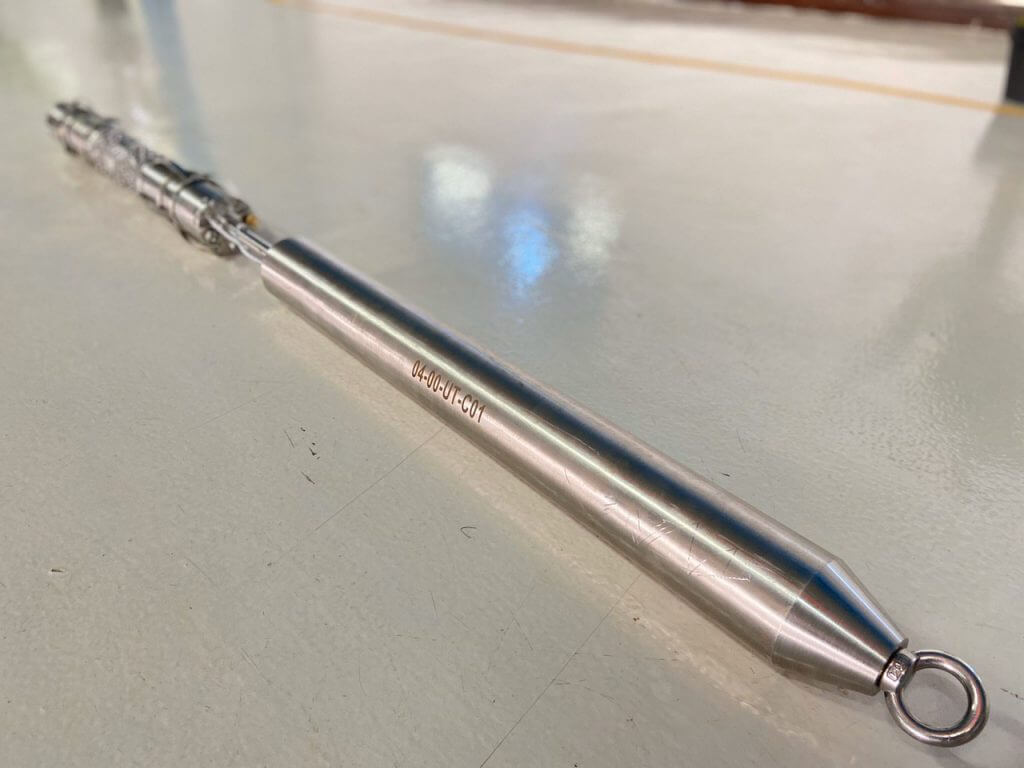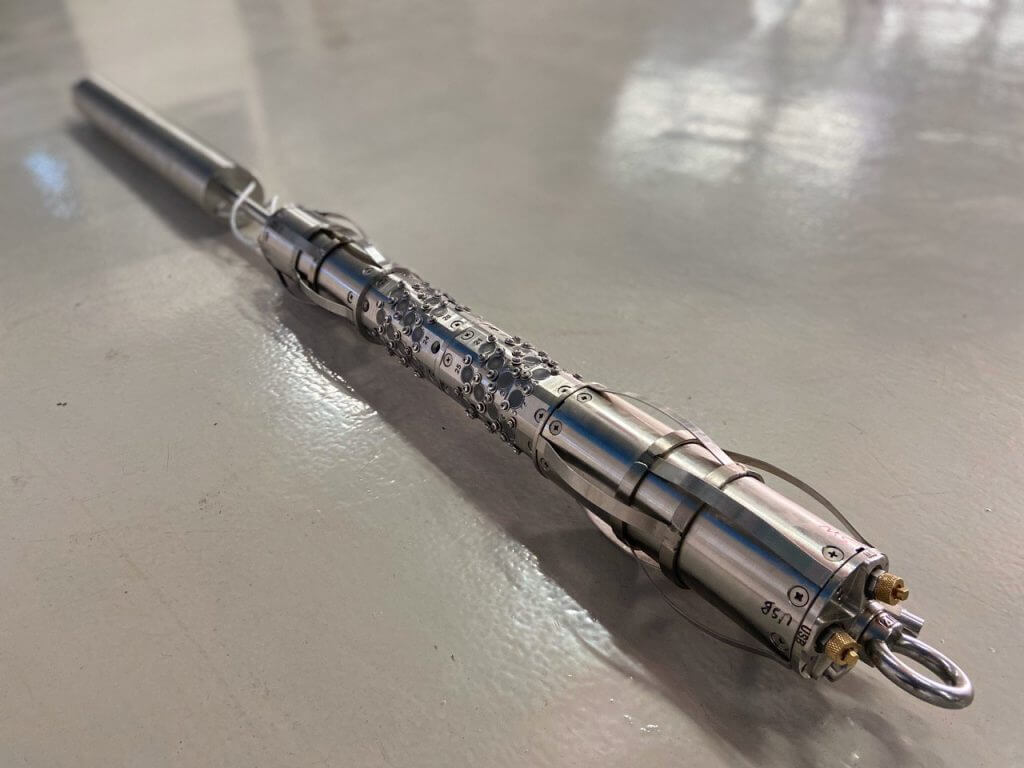SERVICES MENU
INSPECTION & ACCURATE DETECTION OF ANOMALIES IN AN UNUSUAL ENVIRONMENT
The world of tubing inspection can be a complex field to delve into since they are classified as difficult to inspect lines, and especially if you do not know exactly what you are dealing with.
Finding the right team for the job can be a challenge to tackle, especially with all the “experts” out there and their custom-built tools that might not be as reliable or as effective or live up to certain standards.
In order to make an educated decision, estimate of equipment costs, estimate of labor costs, and a calculation of the time-frame necessary to achieve a task within, you need to have a certain level of knowledge in the field and industry to know what you are investing in.
In addition, that investment needs to make economic sense, both in terms of time and in terms of resources in order for it to be done effectively and not play a huge toll to the company’s budget.
Nondestructive testing is one of the most common methods to conduct tubing inspections and it cannot be executed easily, unless the crew involved knows exactly what they are doing with their gear, in terms of size, length, width, and technology, it could end in a disaster and deliver results that are not valid or precise to the point where, long term, it may cause a lot more damage and lead to a lot more costly resolution.
This task can be pursued in multiple ways, the most common being through the use of Ultrasonic or UT inspection technology.
Ultrasonic inspection relies on echo signals and waves to determine where the tubing is damaged and if it has any anomalies that need to be resolved quickly and compromise the overall build. Through these echo signals, the tool can indicate where exactly on the tubing are certain anomalies and through those calculations it can lead the workers to the right areas which need to be fixed in order for the tubing to function properly long-term and avoid potential severe damage that might occur if not done correctly or on time.
Finding the right team for the job can be a challenge to tackle, especially with all the “experts” out there and their custom-built tools that might not be as reliable or as effective or live up to certain standards.
In order to make an educated decision, estimate of equipment costs, estimate of labor costs, and a calculation of the time-frame necessary to achieve a task within, you need to have a certain level of knowledge in the field and industry to know what you are investing in.
In addition, that investment needs to make economic sense, both in terms of time and in terms of resources in order for it to be done effectively and not play a huge toll to the company’s budget.
Nondestructive testing is one of the most common methods to conduct tubing inspections and it cannot be executed easily, unless the crew involved knows exactly what they are doing with their gear, in terms of size, length, width, and technology, it could end in a disaster and deliver results that are not valid or precise to the point where, long term, it may cause a lot more damage and lead to a lot more costly resolution.
This task can be pursued in multiple ways, the most common being through the use of Ultrasonic or UT inspection technology.
Ultrasonic inspection relies on echo signals and waves to determine where the tubing is damaged and if it has any anomalies that need to be resolved quickly and compromise the overall build. Through these echo signals, the tool can indicate where exactly on the tubing are certain anomalies and through those calculations it can lead the workers to the right areas which need to be fixed in order for the tubing to function properly long-term and avoid potential severe damage that might occur if not done correctly or on time.

TECHNICAL ADVANTAGES
PIPECARE offers specialised tubing inspection using 2" Ultrasonic Wall Measurement (UTWM) tool, and through this tool, we can make a more sensitive and precise detection of flaws due to the nature of the technology that is implemented.
This tool allows us to analyse specific measurements based on effective resolutions and ensure sizing accuracy. It collects high-quality data in bidirectional motion and can collect thousands of reflected echo at one point. The 2" UTWM also has the ability to improve analysis for pinhole with a diameter smaller than sensor aperture which also detects axial and circumferential location of anomalies.
PIPECARE's specialised tubing inspection method is multifunctional and allows us to inspect serpentine coils, boiler coil tubings in fired heaters, chemical power plants, downhole tubings in wells, and refineries.
The anomalies our UT tools can detect features such as:
This tool allows us to analyse specific measurements based on effective resolutions and ensure sizing accuracy. It collects high-quality data in bidirectional motion and can collect thousands of reflected echo at one point. The 2" UTWM also has the ability to improve analysis for pinhole with a diameter smaller than sensor aperture which also detects axial and circumferential location of anomalies.
PIPECARE's specialised tubing inspection method is multifunctional and allows us to inspect serpentine coils, boiler coil tubings in fired heaters, chemical power plants, downhole tubings in wells, and refineries.
The anomalies our UT tools can detect features such as:
- General metal loss: Internal & external corrosion
- Internal and external pin holes
- Corrosion pits
- Ovality
- Bulging
- Welds
This, in turn, leads to the detection of even the smallest flaws and anomalies within the piping or tubing system itself, nothing can escape this tool in terms of flaws and that is extremely convenient both for the workers and for the client as everything can be resolved effectively.
One huge advantage of selecting UT technology is the fact that it is shorter in length and it operates under lower pressure, but the most attractive feature by far is the fact that custom design arrangements can be made based on the tubing involved.
Having all of this information will, without a doubt, make you make a better investment when it comes to refinery tubing testing due to the fact that you now have a better understanding of how everything works, and know what tools you will need in order to properly test your tubes.
One huge advantage of selecting UT technology is the fact that it is shorter in length and it operates under lower pressure, but the most attractive feature by far is the fact that custom design arrangements can be made based on the tubing involved.
Having all of this information will, without a doubt, make you make a better investment when it comes to refinery tubing testing due to the fact that you now have a better understanding of how everything works, and know what tools you will need in order to properly test your tubes.
PIPECARE 2" UTWM TOOL SPECIFICATIONS
| Description | Value |
|---|---|
| Tool sizes | 2" - 4" |
| Pipeline product | Upstream oil and gas pipeline products, including the presence of common impurities, such as CO2, SO2 and H2S. Industrial cleaning agents Water/brine |
| Maximum operating pressure | 120 bar |
| Maximum operating temperature range | -20ºC to 100ºC |
| Wall thickness range | 5-6 mm |
| Flow rate | Cable operated, max speed 0.9m/s |
| Anomaly detection | Pin holes, metal loss/corrosion |
| Minimum diameter internal pin hole | 3 mm |
| Metal loss depth accuracy | 0.1 mm depth, +/- 3mm diameter |
| Metal loss detection/reporting threshold | 2 |
| Minimum full bore reduction | 90% OD |
| Axial resolution | 1 mm @ speed 1 m/s |
| Circumferential resolution | 3.7 mm |
| Sensor lens diameter | 5 mm |
Gallery
PIPECARE has an extensive record of successfully deploying customized solutions for unpiggable pipelines worldwide. Available for pipeline diameters from 2” to 24”.



